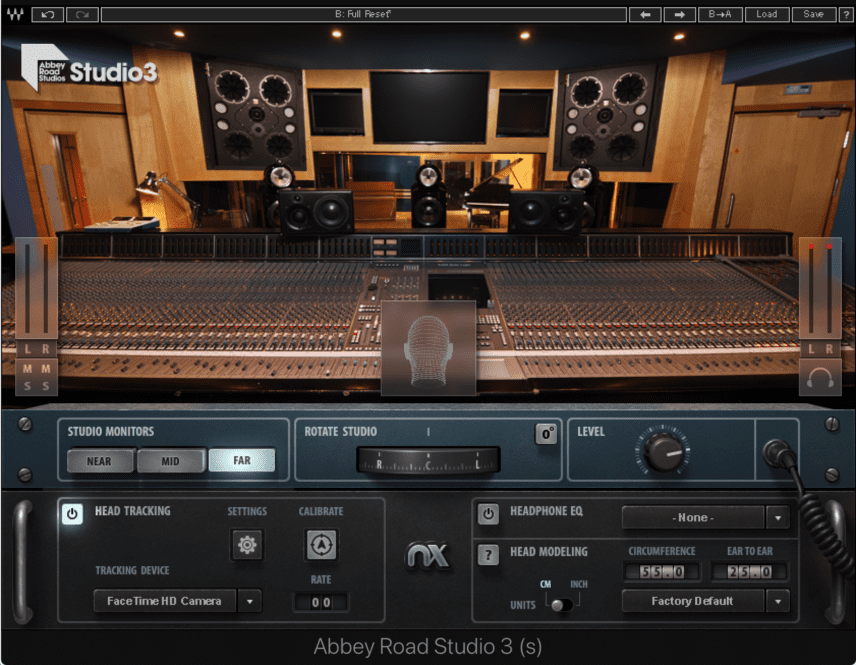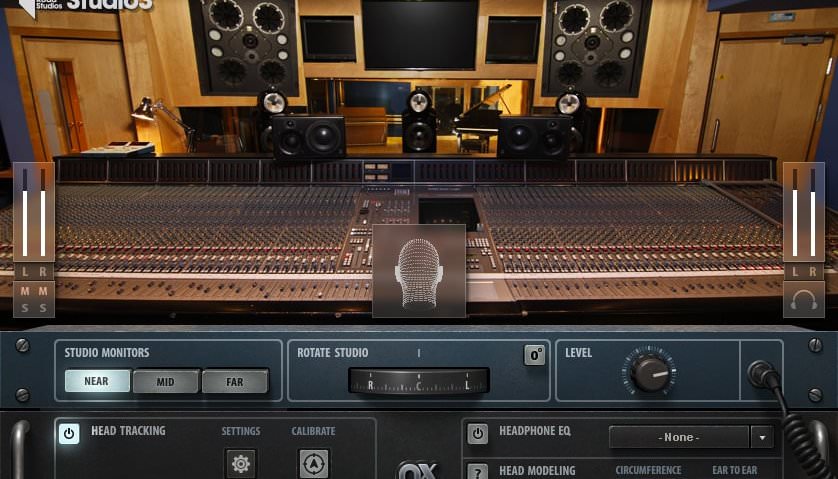Can a plug-in effectively recreate the sweet spot monitoring position of the hallowed Studio 3 at Abbey Road?
Two weeks ago today, we forced our way through the large group of tourists playing make-believe John, Paul, George and Ringo. Keeping our shoes on, we advanced onto the over Instagrammed zebra crossing and entered the revered Abbey Road studios.
We were there to attend the release of Wave’s latest plug-in: Waves Abbey Road Studio 3. Studio 3 is often unfairly overlooked when compared to its big sibling Studio 2 – the room that captured the world’s imagination with The Beatles’ Abbey Road album. However, the team at Abbey Road believe Studio 3 to be the best control room on site and possibly the world. The Israeli company agreed, teamed up with Giles Martin and Alan Parsons and have now attempted to recreate the listening experience.
Let’s not forget Studio 3 has substantial credits of its own. Illustrious names such as Pink Floyd, Radiohead, Amy Winehouse and Kanye West have recorded and mixed there. We sat behind the famous SSL 9000J console and ran several A/B tests between the room and the new Waves plug-in. The results were impressive, and most certainly a great deal of fun, however, we were left curious how practical it is for making music.
What is Waves Abbey Road Studio 3?
This question is harder than you might imagine. The Abbey Road Studio 3 plug-in is a headphone only monitoring tool that processes audio from your DAW to recreate the listening position experience in the control room of Studio 3.
The concept is designed to give the user three choices ‘near’, ‘mid’ and ‘far’ which are modelled on measurements taken with the three most frequently used monitors: a pair of ATC SCM25 ‘near’, B&W 800D speakers ‘mid’ and the Quested Q412 system ‘far’.
To develop the product, Waves have updated their Nx Virtual Mix Room software originally released in 2017 and redesigned it for Studio 3. The Nx system uses psychoacoustics to place sounds in an immersive three-dimensional space and the software could conceptually recreate any space.
There are limitations however as binaural sound will only effectively work when both left and right channels are linked directly to the listener’s ears i.e. when listening on headphones. This means that you could potentially use Abbey Road Studio 3 on your monitors but it will not have the same realistic results.
After the product reveal, we were invited to try it using pre-looped audio that had been created from “Starboy” by The Weekend and Fleetwood Mac’s “Go Your Own Way”. These are sonically contrasting pieces purposefully chosen to display the potential of reimagining the spectrum of your own mix. They gave us perspective of how accurate the plug-in is.
It’s worth noting how incredible the sweet spot sounds in person. Studio 3 lived up to its reputation and its this position, the optimum mixing position of the engineer in the control room, that Waves have tried to capture as a monitoring tool for your DAW. They certainly had their work cut out and the result is impressive if a little perplexing.
Unfortunately, Abbey Road Studio 3 won’t work as a monitoring reference from the back or outside the room. You can’t just walk around to check the mix from afar. It’s just the sweet spot position that has been replicated.
The plug-in does come with a headtracker (just as the original Nx did) and when worn, if you move your head side to side, the listening experience will change to reflect the change in the monitor direction relative to your position. The on-screen “head” (as seen in the below image) moves with the tracker and you can turn a full 360˚ should you wish. If you lose the tracker, you can also use the camera built into your computer.

Do I need it?
This is a pertinent question and Attack would almost always stop short of suggesting you need anything. It’s subjective and always try before you buy.
It’s important to be clear that Abbey Road Studio 3 is designed to give users a monitoring experience that they can then use to influence mixing decisions. You could theoretically mix with it applied but we followed the companies own suggestion and used it as a reference to direct and assist our mix by toggling the bypass on/off on the master bus.
We found that while the results were interesting to test, it would be very hard to make surgical decisions using it. There’s no surprise there but it was intriguing how stems could be analysed when applied to individual as well as grouped tracks. In our case, some heavily distorted drums on a bus track worked well as comparison sounds when we contrasted our ideas with Peder Mannerfelt’s blissful “Lucid in the Sky” and Perc’s hammering “Toxic NRG“. It helped us to reinforce assumptions we had about our drums but it did not make those assumptions for us.
Waves suggested that the product has been designed for their Pro community, defined as producers and DJs of all levels. However, it’s of no surprise that many have questioned, as a headphone only monitoring system, how this could possibly translate to the various levels of headphones available. I.E. will this sound as good on a $30 pair as it will on a pair of Sennheiser HD650? Waves have gone some way to address these issues with EQ profiles, including the Sennheiser HD600s, for several common studio headphones with several more in development.
CONSUMER APPEAL
Abbey Road Studio 3 begs the question that perhaps this is a superior product for general listening on your headphones through your phone, iPod etc? This would broaden its appeal to consumers and its clear that listening to your favourite album in a simulation of Studio 3 would be an exciting proposal.
It also made us wonder: could a commercially minded record label give albums a new angle if they were released along with a simulated audio experience whereby fans can listen back from the sweet spot of the control room the album was mixed in?
There are some who have taken aim at Waves but it’s worth remembering it does have a large appeal for the growing number of producers and engineers who work on-the-go and typically in less than desirable environments such as planes and trains. Used in a chain with other reference and mix tools it can offer practical insight when approached and applied in the correct fashion.
FINAL THOUGHTS
Our judgement would be to suggest reserving judgement till you try it. You may enjoy the added dimension to your monitoring. There will, of course, be a few purists out there who dismiss Abbey Road Studio 3 on the grounds that it’s somehow a waste of time. They’re missing the point.
To reemphasise, its a monitoring tool and not a mixing tool. There are other devices on the market such as Sonarworks that Abbey Road Studio 3 has been unjustly compared to which offer more insight into your mixes. For those who can cast aside their prejudices about this latest plug-in, you might enjoy it. It’s fun, which is no bad thing, and we took pleasure listening to classics from Hotel California to The Prodigy to Blawan.
Currently its available for $99 which makes it just about in reach for most peoples’ impulse buying range and even when it returns to its full retail price of $199, its for the most part, competitively priced.
Abbey Road Studio 3 is out now. For more information www.waves.com
